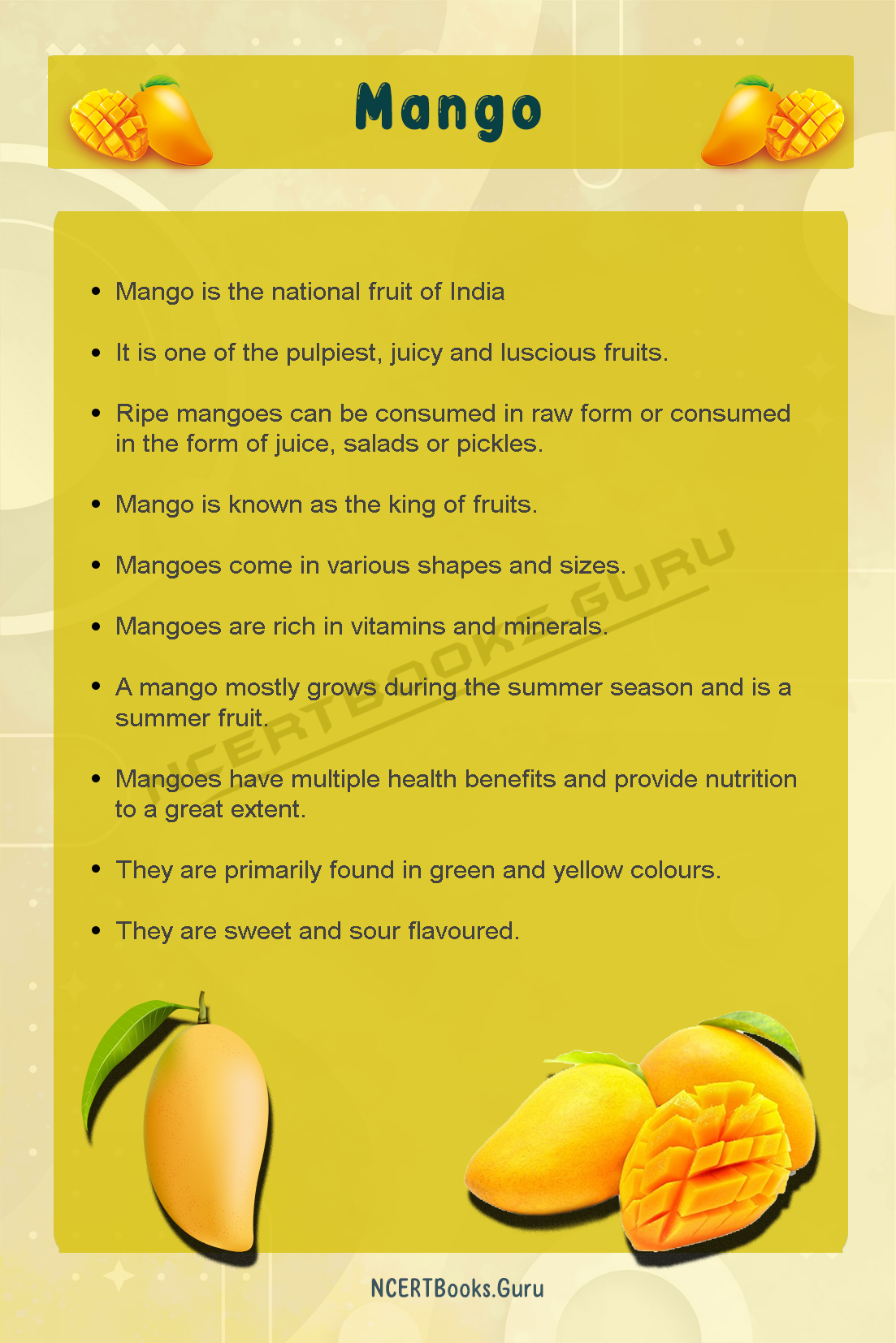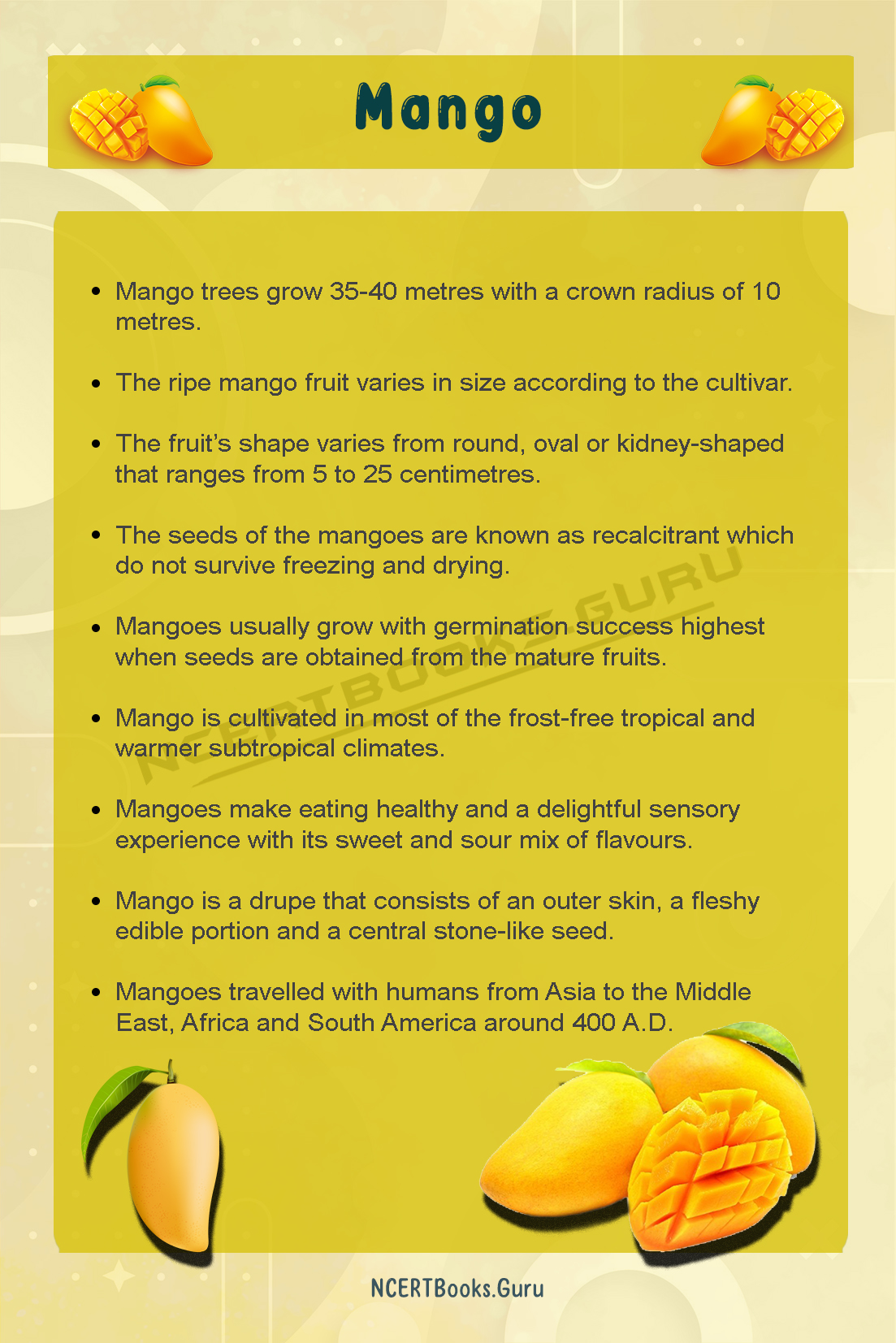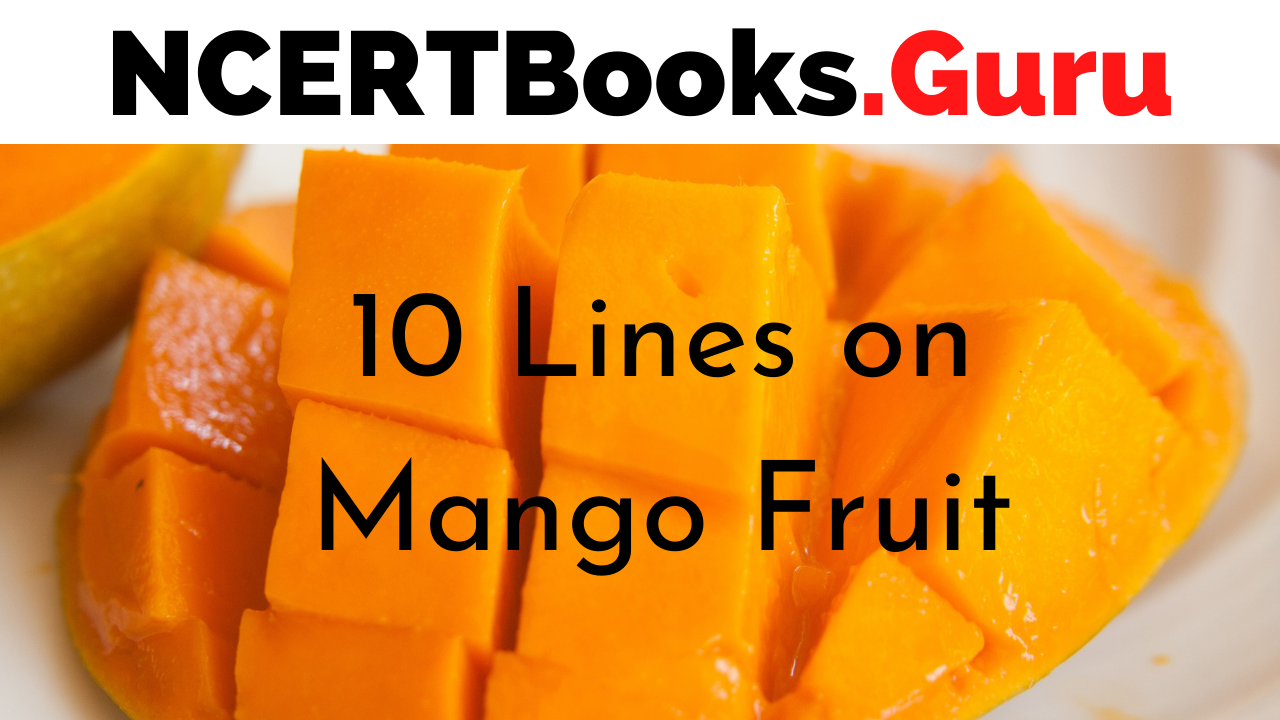10 Lines on Mango Fruit: The mango is a fruit which is also considered as stone fruit. The English word “mango” is derived from the Portuguese word “manga”, Malayan word “Mangga” and the Tamilian word “mankay”. The word man represents the mango tree, and the word kay means the fruit.
The mango fruit is produced from numerous species of tropical trees that belong to Mangifera species, a flowering plant. These species are mostly found as wild mangoes. Mangoes belong to the South of Asia, and they belong to the cashew family named Anacardiaceae. The Indian mango is known as the Mangifera indica, and it has been distributed worldwide.
Enhance your vocabulary and writing skills with 10 Lines Essays available. Spark up the creativity in you and access various Topics on 10 Lines all in one place.
Set 1 – 10 Lines on Mango Fruit for kids
- Mango is the national fruit of India
- It is one of the pulpiest, juicy and luscious fruits.
- Ripe mangoes can be consumed in raw form or consumed in the form of juice, salads or pickles.
- Mango is known as the king of fruits.
- Mangoes come in various shapes and sizes.
- Mangoes are rich in vitamins and minerals.
- A mango mostly grows during the summer season and is a summer fruit.
- Mangoes have multiple health benefits and provide nutrition to a great extent.
- They are primarily found in green and yellow colours.
- They are sweet and sour flavoured.

Set 2 – 10 Lines on Mango Fruit for School Children
- Since ancient times, the fruit mango is famous to the Indian citizens and has been growing in India for the past 5000 years.
- Mangoes are highly nutritious and consist of vitamin A, C, and D, and it is also rich in iron, zinc and calcium.
- Mango helps in bodybuilding since it is highly rich in vitamins.
- People make various pickles with the unripe mangoes, and pickle-making is one of India’s rising businesses.
- The most popular form of mango in India is the Alphonso mango, while the Himsagar mangoes are famous in the Eastern part of India.
- The other varieties of mangoes that are found are Dasher, Badami, Baganapalli and Langra.
- Uttar Pradesh is renowned for its largest production of mangoes
- The main types produced in Uttar Pradesh are, Gulab Khas, Amrapali and Langra.
- The mango has an ample seed which is inedible.
- The colour varies from green, yellow and red.
Set 3 – 10 Lines on Mango Fruit for Higher Class Students
- Mango trees grow 35-40 metres with a crown radius of 10 metres.
- The ripe mango fruit varies in size according to the cultivar.
- The fruit’s shape varies from round, oval or kidney-shaped that ranges from 5 to 25 centimetres.
- The seeds of the mangoes are known as recalcitrant which do not survive freezing and drying.
- Mangoes usually grow with germination success highest when seeds are obtained from the mature fruits.
- Mango is cultivated in most of the frost-free tropical and warmer subtropical climates.
- Mangoes make eating healthy and a delightful sensory experience with its sweet and sour mix of flavours.
- Mango is a drupe that consists of an outer skin, a fleshy edible portion and a central stone-like seed.
- Mangoes travelled with humans from Asia to the Middle East, Africa and South America around 400 A.D.
- Buddha meditated under the cool shade of mango trees.

Frequently Asked Questions on Mango Fruit
Question 1.
What is the sugar content in mangoes?
Answer:
If the mango is served in a ¾ cup, it contains 17 grams of sugar. The naturally occurring sugar in mangoes helps it to make the king of fruits so delicious and tasty. The natural sugars, named fructose in the4 mango differs from the added sugars. Mangoes might taste like a treat, but they are filled with nutrients.
Question 2.
What kind of allergies occur due to mangoes?
Answer:
Most allergies that occur due to mango are skin rashes resulting from touching the mango peel.
Question 3.
What are the ideal mango growing conditions?
Answer:
Mangoes usually prefer a frost-free climate with cool and dry winters. They typically grow on a wide range of soils but usually prefer light and well-drained soil with low fertility.
Question 4.
How do you identify a perfectly ripe mango?
Answer:
There are multiple varieties of mangoes that are available throughout the year. Each type of mango has its characteristics, colour and size. The red or green colour in the mango is not an indicator of its ripeness. It should be kept in mind that the colour is not the best indicator of mango. Always judge the ripeness by feeling the texture of the mango. If the mango can be squeezed easily, it is ripe and ready to eat or make milkshakes and other delicacies.
